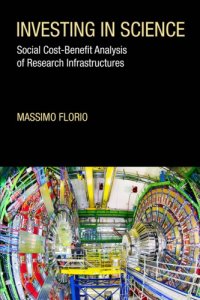
Ebook: Investing In Science: Social Cost-Benefit Analysis Of Research Infrastructures
Author: Massimo Florio
- Genre: Economy
- Tags: Poltical Economy And Development Science: Investing In
- Year: 2019
- Publisher: The MIT Press
- Language: English
- pdf
Large particle accelerators, outer space probes, genomics platforms: all are scientific enterprises managed through the new form of the research infrastructure, in which communities of scientists collaborate across nations, universities, research institutions, and disciplines. Such large projects are often publicly funded, with no accepted way to measure the benefits to society of these investments. In this book, Massimo Florio suggests the use of cost-benefit analysis (CBA) to evaluate the socioeconomic impact of public investment in large and costly scientific projects.
The core concept of CBA of any infrastructure is to undertake the consistent intertemporal accounting of social welfare effects using the available information. Florio develops a simple framework for such accounting in the research infrastructure context and then offers a systematic analysis of the benefits in terms of the social agents involved. He measures the benefits to scientists, students, and postdoctoral researchers; the effect on firms of knowledge spillovers; the benefits to users of information technology and science-based innovation; the welfare effects on the general public of cultural services provided by RIs; and the willingness of taxpayers to fund scientific knowledge creation. Finally, Florio shows how these costs and benefits can be expressed in the form of stochastic net present value and other summary indicators.
The core concept of CBA of any infrastructure is to undertake the consistent intertemporal accounting of social welfare effects using the available information. Florio develops a simple framework for such accounting in the research infrastructure context and then offers a systematic analysis of the benefits in terms of the social agents involved. He measures the benefits to scientists, students, and postdoctoral researchers; the effect on firms of knowledge spillovers; the benefits to users of information technology and science-based innovation; the welfare effects on the general public of cultural services provided by RIs; and the willingness of taxpayers to fund scientific knowledge creation. Finally, Florio shows how these costs and benefits can be expressed in the form of stochastic net present value and other summary indicators.
Download the book Investing In Science: Social Cost-Benefit Analysis Of Research Infrastructures for free or read online
Continue reading on any device:

Last viewed books
Related books
{related-news}
Comments (0)